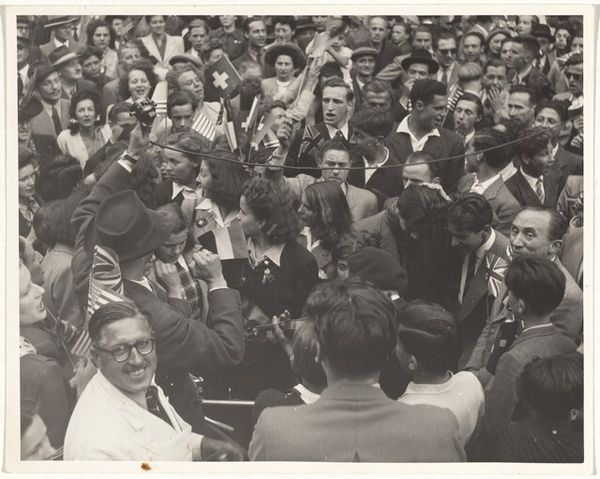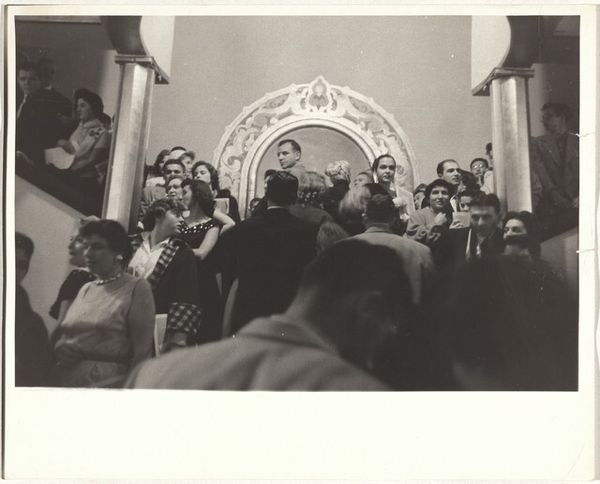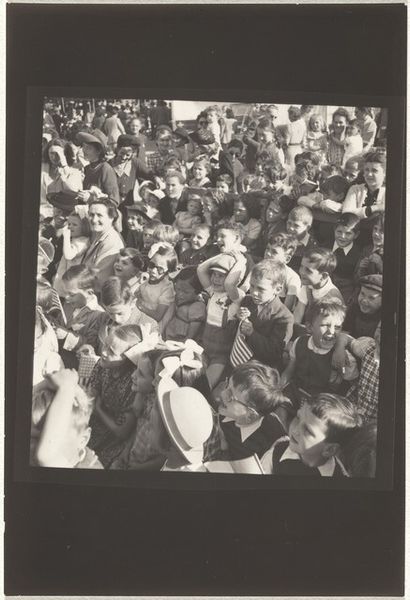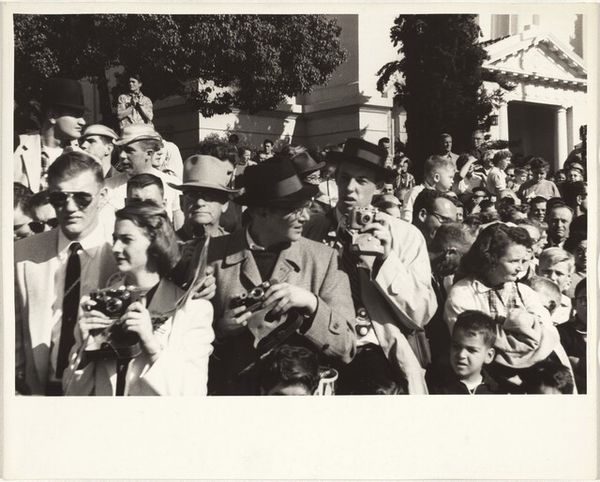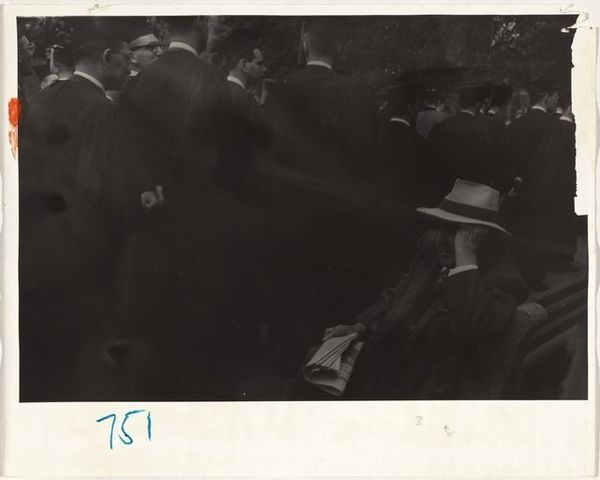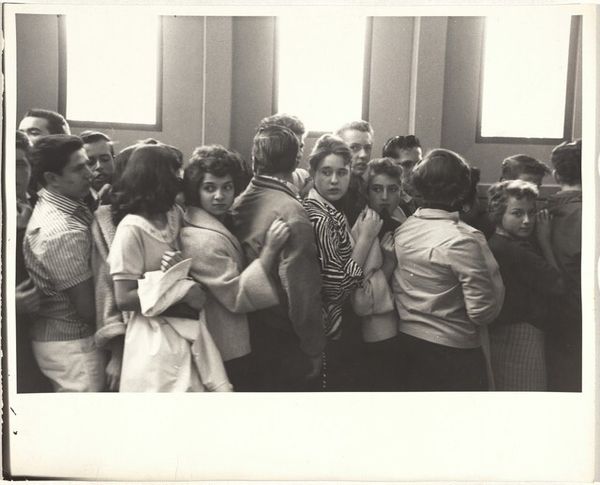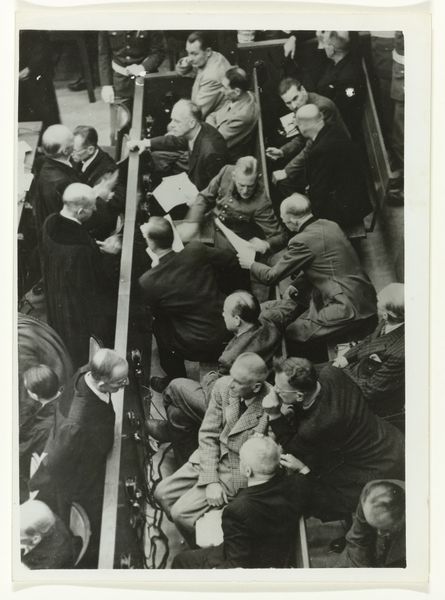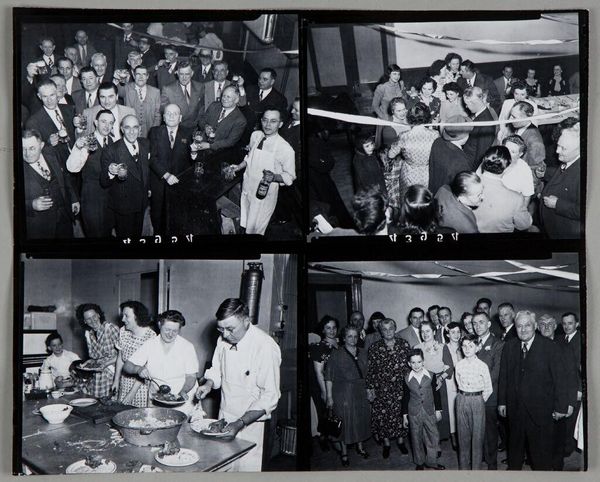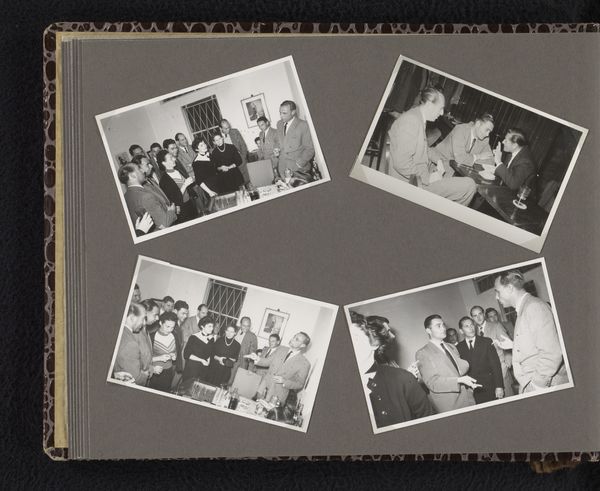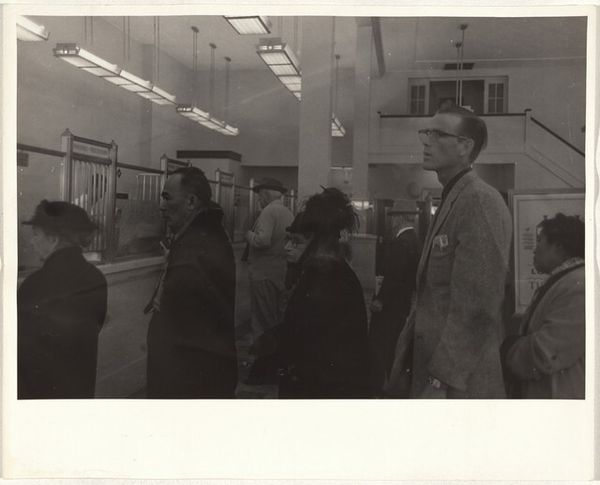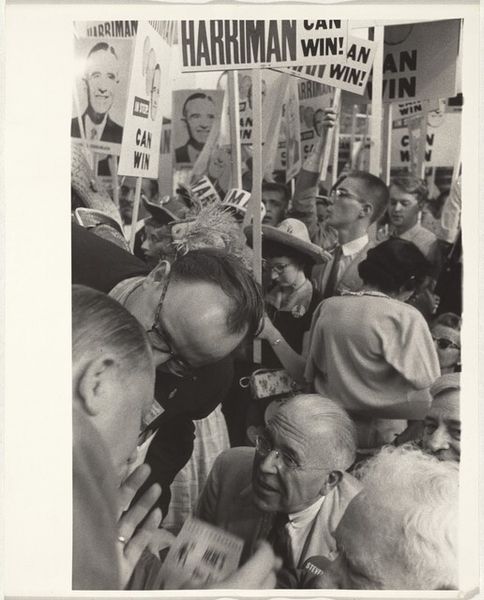
print, photography, gelatin-silver-print
#
print photography
# print
#
landscape
#
street-photography
#
photography
#
gelatin-silver-print
#
realism
Dimensions: sheet: 20.4 x 25.4 cm (8 1/16 x 10 in.)
Copyright: National Gallery of Art: CC0 1.0
Editor: We're looking at Robert Frank's "Canal Street—New Orleans," a gelatin silver print from 1955. It shows a crowd of people, a slice of everyday life, really. What strikes me is the sheer density of faces and how immediate the shot feels, almost like a candid snapshot. How do you read this image in its historical context? Curator: Frank's work, particularly from *The Americans*, often presents a stark contrast to the idealized images prevalent in 1950s America. Consider the socio-political climate. This was a time of both booming prosperity and deeply entrenched racial segregation, particularly in the South. Look closely; do you see a segregated society represented here? Editor: Well, now that you mention it... It's subtle, but yes, I notice a distinct separation between groups of people. Some appear together in the front, others recede further back in the shot. I wouldn't have picked up on this without prompting. Curator: Precisely. Frank's lens captures a sense of unease and social division beneath the surface. His images question the narrative of a unified, happy America, influencing how later generations understood that era through photography and challenging the perceived cultural hegemony. What public function do you think a work like this fulfills? Editor: I suppose it encourages us to reflect critically on our own assumptions about history. Seeing something so seemingly "ordinary" actually unveils so much more about society's unspoken rules and power structures at the time. Curator: Exactly. Frank uses street photography not just to record, but to make us interrogate what is being recorded, by whom, and for what purpose. Photography isn't just about capturing a moment but framing a historical narrative. Editor: I see it now! I’ll definitely keep this in mind the next time I encounter a piece of street photography. Curator: It reframes how we perceive everyday scenes, imbuing them with the weight of history and inviting continued discourse.
Comments
No comments
Be the first to comment and join the conversation on the ultimate creative platform.
